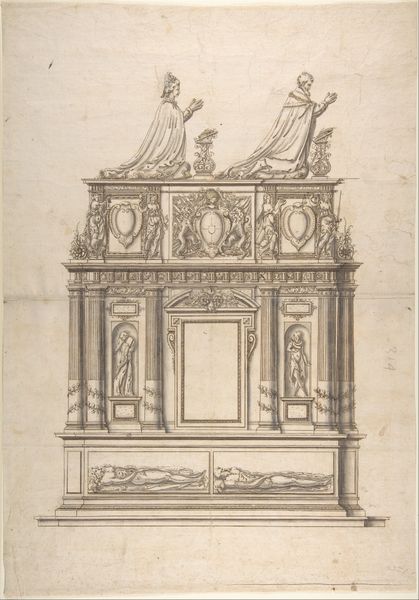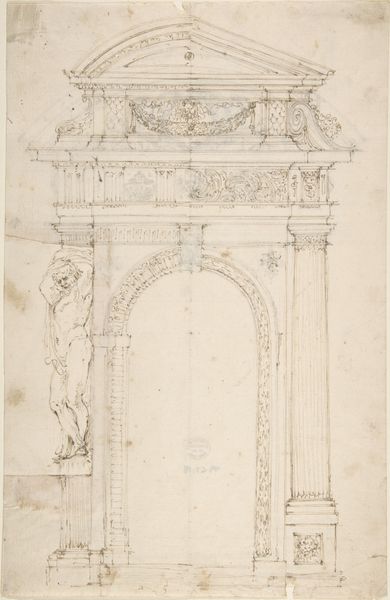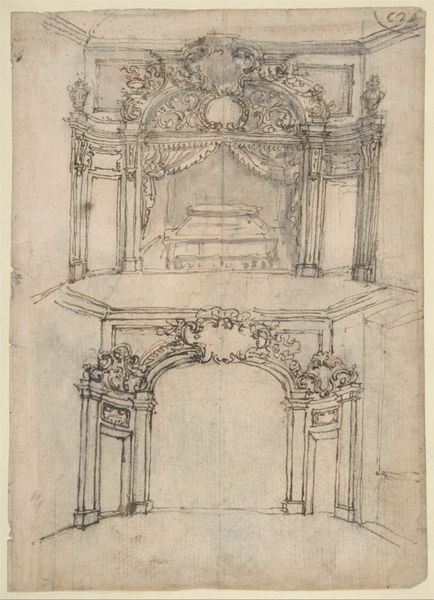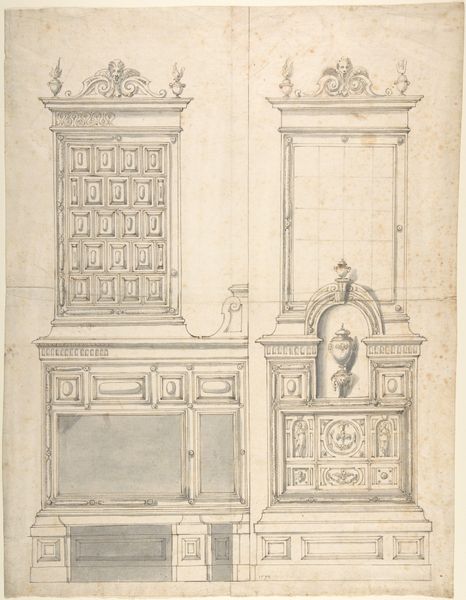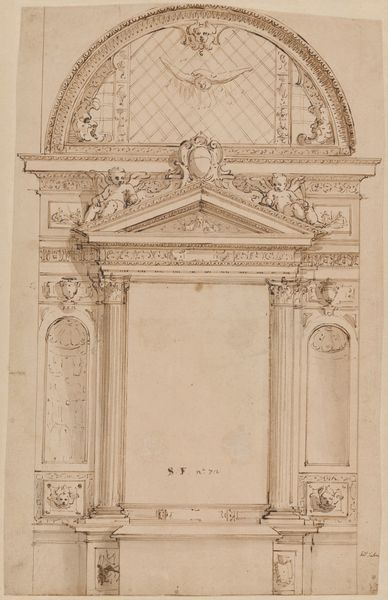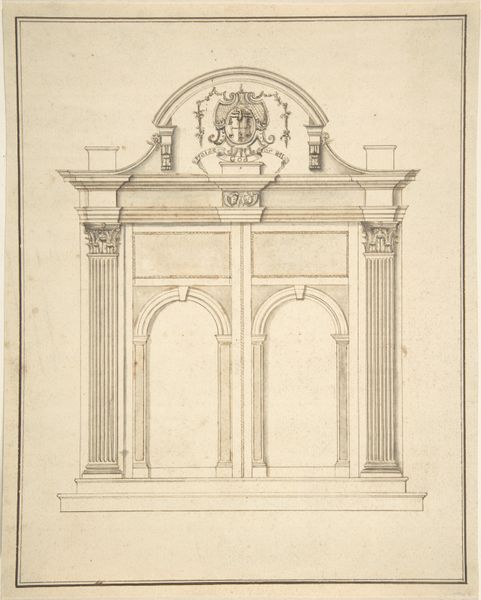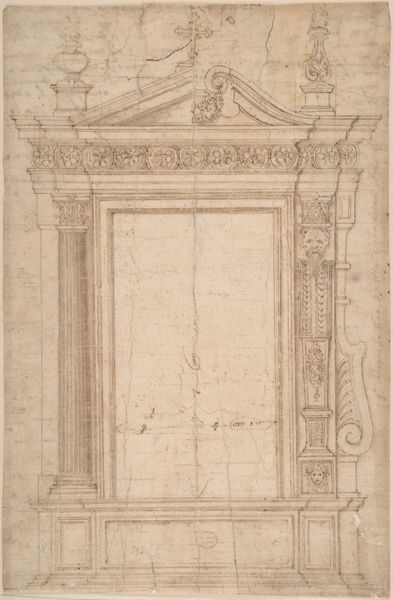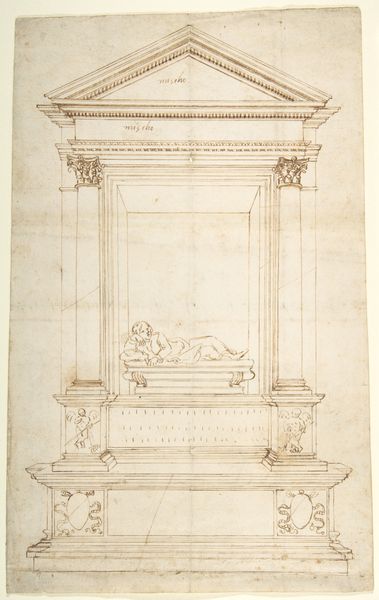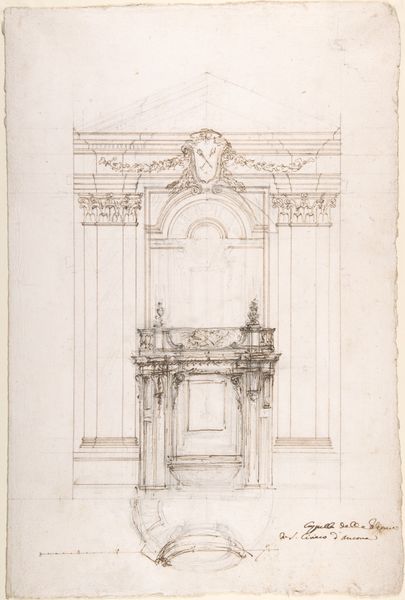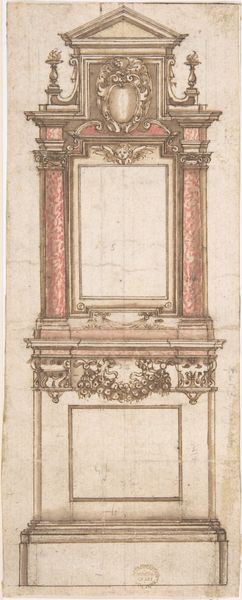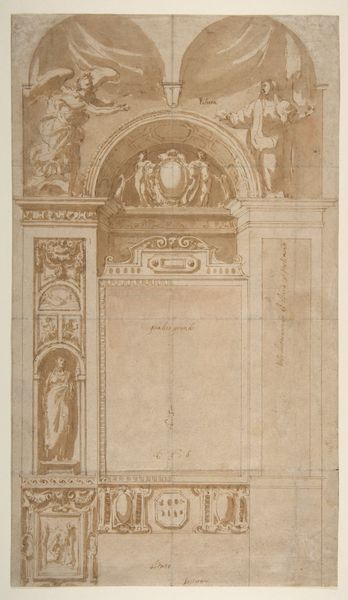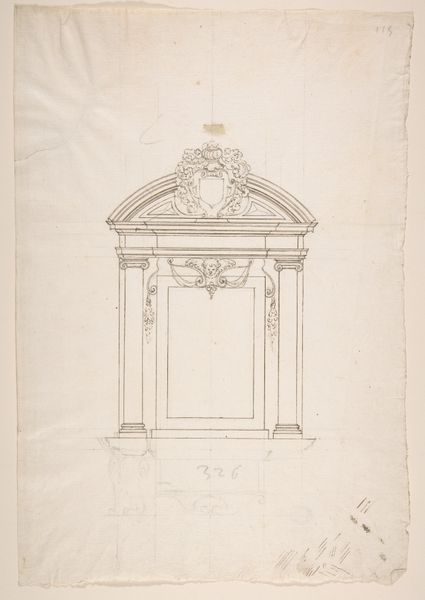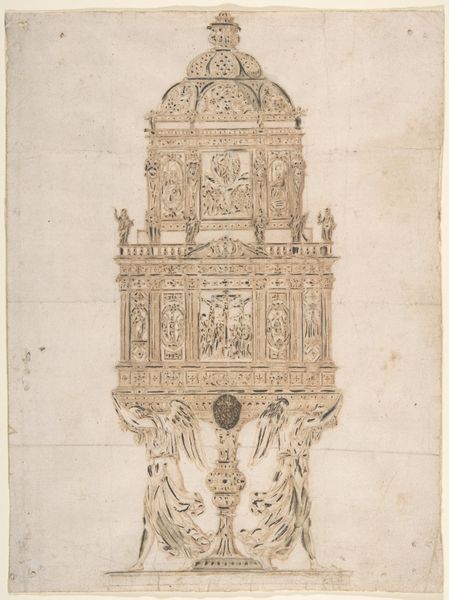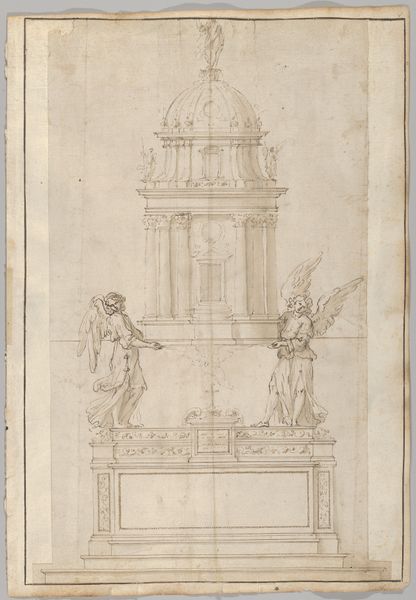
drawing, print, paper, ink
#
drawing
# print
#
paper
#
form
#
11_renaissance
#
ink
#
geometric
#
men
#
line
#
italian-renaissance
Dimensions: sheet: 17 1/2 x 11 1/2 in. (44.4 x 29.2 cm)
Copyright: Public Domain
Editor: This is a drawing from the 16th century called "Design for a Double Tomb." It's attributed to an anonymous artist and made with ink on paper. The rendering feels so precise and symmetrical; I am curious about what this drawing represents in its historical context. What can you tell me? Curator: This work offers a fascinating glimpse into Renaissance conceptions of power, gender, and memory. These tombs were powerful statements for families to not only grieve their loved ones but establish a sense of dynastic importance, so we need to ask ourselves about the figures represented here. Note the figures at the top of the tomb, kneeling in prayer, with elaborate robes. Who are they, and what does their inclusion suggest about the social standing of the deceased? Editor: They must have been wealthy men if they were able to commission such a huge tomb, perhaps church officials? I also see female figures at the top in a subservient role. Curator: Precisely. And consider, too, the act of kneeling – a posture of supplication, of devotion. What does it signify when memorialized in stone, eternally performed? Further, how does the monumentality of the structure itself—the sheer size and the imposing geometric design—reinforce hierarchies of power? Are the symbolic components acting as coded messages for the literate elite, solidifying social capital through a blend of artistry and aristocratic pride? Editor: So this wasn't just a tomb; it was a very calculated representation of their power within society? Curator: Absolutely, and reflecting on this makes us consider whose stories are told, whose memories are honored, and who gets to decide that legacy, even in death. This also reminds us about power dynamics both during the Italian Renaissance, but how monuments still can operate as symbols today. Editor: Thank you; I see the work in a completely different light now. It's more than just a tomb design; it's a historical document reflecting the era's social structures and values. Curator: Indeed. By questioning those choices and exposing hidden social relations within an artwork, we may understand not only how art reflects but reinforces or challenges society and culture.
Comments
No comments
Be the first to comment and join the conversation on the ultimate creative platform.
